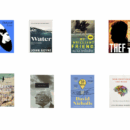Banks, don’t waste a good crisis

A few weeks ago I warned on this page that Kenya’s banks faced a ‘new normal’ – an era in which they would have to respond to tighter regulation, as well as innovate furiously just to survive.
Well, that was before rate-capping knee-capped the industry. The recent Banking Amendment Act has ensured that banks in Kenya cannot impose a lending rate beyond a known ceiling; and must pay out a minimum rate of interest on deposits. Overnight, the huge spread in rates that for so long characterised Kenyan banking is gone.
This measure is misguided. It will benefit existing borrowers, yes; but watch the flow of credit to new loan applicants dry up. No bank will offer risky lending at a maximum of 14 per cent; and lending to smaller businesses is by its nature risky. Those who could afford the higher rates of the past will now be locked out. Banks’ money will flow to risk-free government securities instead.
Other things will also happen. Savings products will be reclassified so that a minimum rate of interest need not be paid on them; new charges that are not technically ‘interest’ will be levied on much lending; expenses will be slashed as banks face sharply lower profits.
Those are the obvious, knee-jerk reactions. I am writing this Sunday to suggest that the deep-thinking bank CEO will not limit his or her reactions to just that set. Rate-capping creates a crisis in the traditional business model, yes – but every crisis is also an opportunity, and no wise leader ever wastes a good crisis. A crisis validates bold action, and boldness is indeed called for now.
First, let’s look at the cost base. I have written before: cutting costs is not a strategy. It is something you do once a strategy has failed; or in response to an unexpected change in circumstance. So while bank financial teams will no doubt be casting their beady eyes on various cost lines, some words of caution.
Don’t cut those costs that will harm the customer experience. A strong relationship with customers is the only way to protect yourself in disruptive times. Your customers have to be willing to stay with you, even when seductive new offers arrive from elsewhere. Degrading their experience is the last thing you should do. There is plenty of fat in most banks’ operations – but the wise ones will cut it out where the customer won’t notice.
Still on cost-cutting: get it over with quickly. Trim the fat and make yourself lean for the ‘new competitive normal’. You will soon need to take on technology-centred new firms with very different cost models. However, move strategy back quickly to its correct focus: revenue generation and long-term advantage. Perennial focus on cost lines is not a winner’s game.
And that’s where my second piece of advice comes in. This is the time to plunge boldly into innovation. You’ve known for years you have to do this – now you actually have to do it. There can be no more prevarication. Innovation is upsetting, because ultimately it upsets the existing apple cart. However, them ol’ apples are hitting the ground soon anyway, so you might as well be the one to overturn the cart.
Innovation is vital now because of two huge threats to the average banking business. First, existing players are going to make some bold – and even reckless – moves in response to rate-capping. Things are going to get weird. Second, new players will come in – and these are an existential threat. They will come in two forms: small, very nimble ‘FinTech’ players who will target niche business segments; and huge companies with global scale (like Google, Facebook, Apple, Uber) who can incorporate bank-like functionality into their existing platforms.
Your only possible response as a traditional bank is to innovate quickly. You have to make the walls of your bank box disappear, and think afresh. You have to see banking as an activity that is done by a customer right there in her life – not as something that entails a visit to your location. Banking has evolved away from rigid protocols in a particular place to flexible, personalised, contextual money management. It is now done by customers as they live their lives – as they buy, sell, pay, save, borrow – not as an interruption to those lives.
Will your bank get it? I fear most won’t. Many will cut the wrong costs and hold on to the wrong models. There will be blood.
(Sunday Nation, 25 September 2016)

Buy Sunny Bindra's new book
The X in CX
here »
Popular Posts
- My books of the yearDecember 14, 2025
- Here’s why you should become foolishNovember 30, 2025
- Confessions of an explaining personDecember 7, 2025
- How to listen, really listenNovember 16, 2025
- Is AI hiring your company into oblivion?November 23, 2025















